- Inicio
- Arquitectura
- _RASCACIELOS
- __Burj Khalifa Dubai
- __Edificio Chrysler, NY
- _Estilos Arquitectónicos
- __Arquitectura Posmoderna
- __Deconstructivismo
- Arte
- _Arte Universal
- _Arte Contemporáneo
- __Serge Marshennikov
- __Damian Lechoszest
- __John Kacere
- _Escultura
- __Venus de Milo
- __Moisés de Miguel Ángel
- __Baldaquino de San Pedro
- __El rapto de Proserpina
- __La Verdad Velada
- __Perseo con cabeza de Medusa
- __Venus de Willendorf
- _Pintura
- __Capilla Sixtina
- __Cuadros Famosos
- __La Creación de Adán
- __Venus del Espejo Velázquez
- __Hipómenes y Atalanta
- __Venus Boticelli
- __Silla de van Gogh
- __Jugadores de Cartas Cézanne
- __Cabeza de Medusa Caravaggio
- __Impresionismo
- __Posimpresionismo
- _Historia
- __Edad Moderna
- Curiosidades
- _Arquitectura y Arte
- _Tumba de Miguel Ángel
- FRASES
- _Frases de la semana
- _Arquitectos
- _Escultores
- __Miguel Ángel Buonarroti
- __Bernini
- __Rodin
- _Pintores
- __Picasso
- __Vincent van Gogh
- __Cézanne
- __Claude Monet
- __Henri Matisse
- __René Magritte
- __Miguel Ángel
- CULTURA
- _Museos
- __Museo del Louvre
- Formación
- _Formación BIM Online
- _Cursos Domestika
- Más
- _ENTREVISTAS
- __Johannes Wesskmark
- __Nathan Zawaya
Lo más visto de la semana!!
RASCACIELOS DESTACADOS EN NY
Rascacielos Postmodernos en EEUU
DESTACADOS AIA 150
- 1.-EMPIRE STATE BUILDING
- 5.-GOLDEN GATE BRIDGE
- 9.-CHRYSLER BUILDING
- 12.-WASHINGTON MONUMENT
- 14.-THE GATEWAY ARCH
- 19.-THE WORLD TRADE CENTER
- 20.-BROOKLYN BRIDGE
- 29.-FALLINGWATER
- 39.-DELANO HOTEL
- 42.-SEARS TOWER
- 44.-WOOLWORTH BUILDING
- 59.-MILWAUKEE ART MUSEUM
- 61.-TRANSAMERICA PYRAMID
- 68.-THE NEW YORK TIMES TOWER
- 71.-HEARST TOWER
- 72.-FLATIRON BUILDING
- 73.-LAKE POINT TOWER
- 125.-CITICORP CENTER
- 129.-WEISMAN ART MUSEUM
- 132.-PENNZOIL PLACE
PUENTES DESTACADOS EN EL MUNDO
FEDERACIÓN MUNDIAL DE GRANDES TORRES
TORRES DESTACADAS EN EL MUNDO
RASCACIELOS DESTACADOS EN CHICAGO
OBRAS DESTACADAS EN EUROPA
OBRAS MAESTRAS DE LA HISTORIA DEL ARTE: ESCULTURA
- Constellation
- El hombre que camina
- El Ángel del Norte
- Chicago Picasso
- Torres de Ciudad Satélite
- La columna sin fin de Brancusi
- Monte Rushmore
- Cristo Redentor Brasil
- El Pensador de Rodin
- La Edad de Bronce (Rodin)
- Estatua de la Libertad
- La musa dormida Brancusi
- Eros y Psique Cánova
- Caballos de Marly
- Éxtasis Beata Ludovica Albertoni
- Fontana de Trevi
- Fuente de los Cuatro Ríos
- Éxtasis de Santa Teresa
- Fuente del Tritón
- David de Miguel Angel
- La Piedad de Miguel Ángel
- David de Donatello
- Laocoonte y sus hijos
- Victoria de Samotracia
- Cariátides
Especial ¿Sabías qué...?
OBRAS DESTACADAS EN ITALIA
Frases Célebres: Arquitectos Famosos
Frases Célebres: Pintores Famosos
Arquitectura, Escultura, Pintura, Ingeniería, Software-Programas de Diseño Arquitectónico: Metodología BIM, Revit, AutoCAD, 3ds max, Animación; Software de Adobe; Cursos online, Libros, Historia, Cultura, Timelapse y Dronelapse sobre Arquitectura y ciudades, Frases Célebres, Curiosidades, Rascacielos, Puentes, Edificios interesantes, Construcciones vanguardistas, Construcciones famosas, Diseño, Arte, Fotografía Arquitectónica / Architecture, Sculpture, Painting, Engineering, Software-Architectural Design Programs: BIM Methodology, Revit, AutoCAD, 3ds max, Animation; Adobe software; Online courses, Books, History, Culture, Timelapse and Dronelapse on Architecture and cities, Famous Phrases, Curiosities, Skyscrapers, Bridges, Interesting buildings, Avant-garde constructions, Famous constructions, Design, Art, Architectural Photography
Edificio Media-TIC | Barcelona Growth Centre, Distrito 22@, Barcelona, Spain, 2000 — 2010
ESPAÑOL
Nombre anterior: Edificio Media-TIC
Nombre actual: Barcelona Growth Centre
Cliente: El Consorci de la Zona Franca,
Ajuntamiento de Barcelona y 22@
Arquitecto: Enric Ruiz-Geli, Cloud 9
Estructura: BOMA, Agustí Obiol
Superficie Construida: 23.104 m²
Plantas: 8 Plantas + Altillo
2 plantas de parking bajo rasante
Disponibilidad de ocupación: 2.418 personas
Presupuesto: 20.791.486 Euros
Uso: Mixto
Estilo Arquitectónico: Arquitectura sostenible, digital, CAD
Tipología: Arquitectura Híbrida
Fotografías y Texto: © José Miguel Hernández Hernández
Planos, Videos y parte del Texto: © Enric Ruiz-Geli, Cloud 9
Denominado por su propio creador como "La Pedrera Digital", ya que sus proporciones estan inspiradas en la famosa Casa Milá o La Pedrera, obra del también arquitecto y maestro Antoni Gaudí, el arquitecto principal del Estudio Cloud 9 Enric Ruiz-Geli diseñó un nuevo y moderno edificio vanguardista llamado Media-TIC, que forma parte de un nuevo e importantísimo Plan de Regeneración Urbana para la ciudad de Barcelona en la zona industrial del Poble Nou. En este nuevo e innovador Plan, más de 40 proyectos relacionados con diversos sectores van a revitalizar el "Distrito de la Innovación" denominado "22@", donde se está construyendo una gran infraestructura que va a dotar a esta zona de la ciudad condal de numerosas empresas e instituciones del mundo de las tecnologías de la información y de la comunicación buscando una importante proyección internacional.
Vista parcial del nuevo Distrito de la Innovación, denominado 22@, con el Edificio Media-TIC a la derecha en primer término y la famosa Torre Agbar al fondo / Partial view of the new Innovation district called 22 @, with the Media-TIC building right in the foreground and the famous Agbar Tower in the background
El enorme reto de este interesante proyecto en el que han colaborado numerosas empresas importantes y cuya construcción ha durado nada menos que una década, ha sido posible llevarlo a cabo gracias a la iniciativa de las propias Autoridades Locales de Barcelona y El Consorci de la Zona Franca quienes han impulsado una obra realmente innovadora mediante un edificio ecológico y sostenible, en la que se instalaran las diferentes oficinas pertenecientes a varias empresas e instituciones importantes relacionadas con las comunicaciones y de Internet. El Edificio Media-TIC funciona como una "incubadora digital", en el que se han distribuido diferentes espacios destinados a cada uso en función de la actividad que se va a desarrollar en su interior.
"Ahora, en la era de la Información, la arquitectura ha de ser una plataforma tecnológica, donde lo que importan son los bits, la conectividad, los nuevos materiales, la nanotecnología... Las connexiones son más importantes que el peso de los materiales. Se trata de un mundo electrónico, inmaterial, en el cual lo que importa és el dibujo de la red y no de la gravedad", Cloud 9

El edificio cuenta con dos entradas accesibles desde la calle por medio de dos fachadas distintas. Dos plantas bajo rasante dan cabida a espacios destinados para parking privado. La denominada "Casa de las TIC" (tecnologías de la información y la comunicación), y los espacios comunes, están formados por la Planta Baja, el Altillo y la Planta 1. El importante espacio de la Planta Baja, aparte de ofrecer la función de vestíbulo de entrada de acceso principal al edificio y contar con un amplio restaurante, dispone también de grandes espacios diáfanos que se pueden destinar a exposición; mientras tanto, la Planta 1 cuenta con diferentes oficinas y un gran Salón de Actos con una capacidad para 300 personas. Las denominadas "Plantas Incubadora" se distribuyen desde la Planta 2 hasta la Planta 5; estás plantas están destinadas a oficinas de empresas emprendedoras del sector media y audiovisual. En las plantas 6,7 y 8 se han habilitado diferentes oficinas para uno de sus promotores, El Consorci de la Zona Franca. Además, el Edificio Media-TIC cuenta con una cubierta ecológica en su parte superior.


Bioluminiscencia © Cloud 9
Gracias a la Super-estructura metálica que sostiene al Edificio Media-TIC, da la sensación que los perfiles metálicos situados en la última planta y que han sido pintados con una pintura verde especial reflectante que se ilumina por la noche, simulen nada menos que la figura humana... / With the Super-metal structure that supports the Media-TIC building, gives the impression that the metal sections located on the top floor and have been painted with special reflective green paint that lights up at night, simulating nothing less than the human figure ...


Las diferentes plantas del Edificio tienen la particularidad de estar colgadas gracias a una gigantesca estructura mediante cuatro enormes pórticos metálicos situados en sentido suroeste-nordeste; estos se sitúan a 14 metros de distancia el uno del otro. Al igual que la famosa Torre Eiffel de París se ensambló mediante millones de roblones en la época de la revolución industrial, para la nueva "arquitectura digital", en el Edificio Media-TIC se utilizó un sistema constructivo similar en el que no se soldó ninguna de las piezas que conforman la Mega-estructura. De este modo, todas las piezas que componen la estructura fueron remachadas, (atornilladas), quedando unidas entre sí como un todo. Mediante esta estructura innovadora se consiguieron espacios totalmente diáfanos en el interior de todo el edificio. Esta "nueva nave estructural de la era de la información dialoga con las otras naves industriales del Poble Nou". Una pintura especial reflectante de color verde se aplicó a toda la estructura del edificio y se ilumina por la noche.

Las cuatro fachadas innovadoras y que son todas distintas, han sido diseñadas mediante exhaustivos estudios consiguiendo que cada una se adapte al medio ambiente que la rodea. Con el diseño de este vanguardista y moderno edificio se consiguió un ahorro energético real del 20% gracias al empleo del innovador monomaterial Etfe. Son nada menos que 2.500 m² de Etfe los que cubren gran parte de dos de las fachadas del Edificio Media-TIC. Este nuevo e innovador material, al que también se le conoce como Efte y que también ha sido utilizado en otros pocos proyectos a nivel mundial como el Allianz Arena de Munich, obra de los arquitectos Herzog & de Meuron, actúa como un filtro solar consiguiendo un importante ahorro energético en el interior del edificio. Debido a la introducción de este innovador material en la construcción del Media-TIC, se consiguieron 42 de los 57 puntos máximos marcados por el Decreto de Criterios Ambientales y de Ecoeficiencia Energética.


Las fachadas sur-este y sur-oeste se presentan como las más innovadoras debido fundamentalmente a la incidencia del sol sobre ellas durante gran parte del día. Para la fachada principal (sur-este), por ejemplo, que recibe 6 horas de sol al día y por tanto recibe un sistema solar extremo, se ha hecho el empleo del Etfe mediante un sistema de cojines que se hinchan y deshinchan produciendo sombras con las que se consigue un importante ahorro energético en el interior del edificio; esta fachada está formada por una doble piel y detrás de esta coraza de Etfe se utilizó un sistema de muro cortina. Mientras tanto, para la fachada sur-oeste y que también recibe una fuerte insolación solar durante el día, se hizo el empleo del Etfe mediante un sistema denominado "lenticular" formado por dos láminas de Etfe que crean una nube de nitrógeno (una especie de cortina de humo), que impide que los rayos solares penetren también en su interior.
"El proyecto MEDIA-TIC de CLOUD 9 es una arquitectura digital,
construida a través de procesos digitales de CAD-CAM. La fachada del MEDIA-TIC no explica la construcción industrial en serie, sinó que evoluciona y explica la construcción digital, la construcción de la información. Una construción contemporánea que permite construir una fachada muy compleja. Estamos construyendo La Pedrera Digital en el 22@Barcelona", Cloud 9
Otros Premios y Distinciones:
Mejor Edificio de Oficinas 2011 por el World Architecture Festival (WAF)
Mención especial a los Premios FAD de Arquitectura , 2011
Premio de investigación de la XI Bienal Española de Arquitectura y Urbanismo, 2011
Nominado al Brit Insurance Design Awards, 2011
Nominado al Union Prize for Contemporary Architecture - Mies van der Rohe Award, 2011
Nominado al Premio Internacional Iakov Chernikov, 2011
Premio Construcción Sostenible de Castilla y León, 2010
Premio Steel Design Awards for outstanding steel construction, 2009
ENGLISH
Previous name: Edificio Media-TIC
Current name: Barcelona Growth Centre
Client: El Consorci de la Zona Franca,
Ajuntamiento de Barcelona y 22@
Architect: Enric Ruiz-Geli, Cloud 9
Structure: BOMA, Agustí Obiol
Built Area: 23.104 m²
Floors: 8 floors + mezzanine
2 plantas de parking bajo rasante
Availability of occupation: 2.418 people
Budget: 20.791.486 Euros
Use: Mixed
Architectural Style: Sustainable architecture, digital, CAD
Type: Hybrid Architecture
Images and Text: © José Miguel Hernández Hernández
Drawings, Videos and part Text: © Enric Ruiz-Geli, Cloud 9
Named after its creator as "La Pedrera Digital", since their proportions are inspired by the famous Casa Mila or La Pedrera, also works by Antoni Gaudi architect and teacher, the principal architect of Studio Cloud 9 Enric Ruiz-Geli designed a new avant-garde and modern building called the Media-TIC, part of a new and important urban regeneration plan for the city of Barcelona in the industrial area of Poble Nou. In this innovative new plan, more than 40 projects in various sectors are going to revitalize the "Innovation District" called "22 @", where they are building a large infrastructure that will give this area of the county town of numerous companies and institutions in the world of information technology and communications major looking for an international presence.
The enormous challenge of this exciting project in which many major companies have collaborated and whose construction has lasted no less than a decade, it has been possible to carry out thanks to the initiative of local authorities themselves in Barcelona and The Consortium of the Zona Franca who have led a truly innovative work by a green building and sustainable development, were installed in various offices belonging to several major companies and institutions related to communications and the Internet. The Media-TIC building functions as a "digital incubator", which have been distributed to different spaces for each use, depending on the activity that will develop inside.


"Now in the era of information, the architecture has to be a technology platform, where what matters are the bits, connectivity, new materials, nanotechnology ... The Connections are more important than the weight of materials. This is an electronic world, immaterial, in which what matters is the design of the network, not gravity", Cloud 9
The building has two entrances accessible from the street by two different facades. Two floors underground to make room for private parking spaces. The so-called "House of ICTs (information technology and communication), and common spaces are made up of the ground floor, the Loft and the Plant 1. The large ground floor space and to offer the role of input lobby main entrance to the building and have a large restaurant, also has large open spaces that can be devoted to exhibition, meanwhile, has Plant 1 different offices and a large hall with a capacity for 300 people. So-called "hatchery" is distributed from the plant 2 to plant 5, these plants are designed to offices of entrepreneurial ventures and audiovisual media sector. In plants 6,7 and 8 different offices have been set up for one of its promoters, the Consortium of the Zona Franca. In addition, the Media-TIC building has a green roof on top.


The innovative and four facades are all different, have been designed through exhaustive studies by ensuring that each matches the surrounding environment. With the design of this modern and modern building got a real energy savings of 20% through the use of innovative monomaterial ETFE. They are no less than 2,500 m² of ETFE which cover much of two of the facades of the Media-TIC building. This innovative new material, which is also known as EFTE and has also been used in a few other global projects such as the Allianz Arena in Munich, designed by architects Herzog & de Meuron, acts as a sunscreen getting a significant energy savings within the building. Due to the introduction of this innovative material in the construction of the Media-TIC, got 42 of the 57 peaks marked by the Decree of Environmental Criteria and Energy Eco-efficiency.
The facades south-east and south-west are the most innovative due primarily to the impact of the sun on them for much of the day. For the main facade (south-east), for example, that receives six hours of sun a day and therefore get a solar system far, it has been the use of ETFE cushions with a system that inflates and deflates producing shadows which achieves significant energy savings within the building, the facade is formed by a double skin and behind the shield of ETFE used a curtain wall system. Meanwhile, to the south-west facade and who also receives strong solar insolation during the day, it was the use of ETFE using a system called "lenticular" formed by two sheets of ETFE that create a cloud of nitrogen (a kind of smoke), which prevents the sun's rays also penetrate inside..
The Media-TIC building has been nominated for the European Union Prize for Contemporary Architecture - Mies van der Rohe Award 2011 / El Edificio Media-TIC ha sido nominado al European Union Prize for Contemporary Architecture – Mies Van der Rohe Awards 2011
The different floors of the building has the particularity of being hung by a giant structure through four huge metal gates located in southwest-northeast direction, and these are situated 14 meters away from each other. Like the famous Eiffel Tower in Paris is joined by millions of rivets at the time of the industrial revolution to the new "digital architecture" in the Media-TIC building used a similar construction system in which there are no welded of the pieces that make up the Mega-structure. Thus, all the components of the structure were riveted (bolted), being joined together as a whole. Through this innovative structure was achieved completely open spaces within the building. This "new ship structural information age interacts with the other industrial buildings of Poble Nou." A special reflective paint applied to green the whole structure of the building and is illuminated at night.
"The project ICT MEDIA CLOUD 9 is a digital architecture,
built through digital processes of CAD-CAM. The facade of the MEDIA-TIC does not explain the industrial construction in number, but it evolves and explains digital construction, construction of information. A contemporary construction that allows very complex construct a facade. We are building La Pedrera Digital in the 22 @ Barcelona", Cloud 9

Other Awards and Distinctions:
Best Office Building 2011 for the World Architecture Festival (WAF)
Special mention FAD Award for Architecture, 2011
Research Award of the Eleventh Biennial of Spanish Architecture and Urbanism, 2011
Nominated for Brit Insurance Design Awards, 2011
Nominated Prize for Contemporary Architecture Union - Mies van der Rohe Award, 2011
Nominated Iakov Chernikov International Prize, 2011
Sustainable Construction Award of Castile and Leon, 2010
Steel Design Awards Award for outstanding steel construction, 2009
All the images of the Media-TIC Building here
Drawings and Videos © Enric Ruiz-Geli, Cloud 9, Web
"Images, Text and Edition"
© José Miguel Hernández Hernández
All rights reserved
www.jmhdezhdez.com
Related post / Entradas relacionadas
Porta Fira Towers
Barcelona, Spain
Toyo Ito & Associates
Gas Natural Office Building
Barcelona, Spain
EMBT
Forum Barcelona Building
Barcelona, Spain
Herzog & de Meuron
Agbar Tower
Barcelona, Spain
Jean Nouvel

Casa Milá (La Pedrera)
Barcelona, Spain
Antoni Gaudí
¡Hola y bienvenido/a!
Gracias por visitar mi blog sobre Arquitectura y Arte: www.jmhdezhdez.com. Aquí comparto mi pasión por el diseño, la creatividad y las últimas tendencias en el mundo de la arquitectura. Si deseas seguir mi trabajo y proyectos, te invito a explorar la continuación natural de este blog en mi nuevo sitio web: ArquitecturaCarreras.com. En este nuevo espacio encontrarás artículos, recursos y novedades que estoy seguro te inspirarán. ¡Te espero allí con muchas novedades!
Gracias por visitar mi blog sobre Arquitectura y Arte: www.jmhdezhdez.com. Aquí comparto mi pasión por el diseño, la creatividad y las últimas tendencias en el mundo de la arquitectura. Si deseas seguir mi trabajo y proyectos, te invito a explorar la continuación natural de este blog en mi nuevo sitio web: ArquitecturaCarreras.com. En este nuevo espacio encontrarás artículos, recursos y novedades que estoy seguro te inspirarán. ¡Te espero allí con muchas novedades!


Arquitectura y Tecnología al servicio del diseño inteligente.
Esta guía esencial para Smart Homes te muestra cómo integrar dispositivos inteligentes en viviendas contemporáneas, mejorando el confort, la eficiencia energética y el diseño funcional. Ideal para arquitectos, interioristas y entusiastas del arte del habitar.
👉 Descubre la guía completa
Fotografía de Arquitectura

Directorio de Fotógrafos de Arquitectura en España: Descubre a los Mejores Expertos en Fotografía Arquitectónica para Documentar tus Proyectos y Obras

Fotografía Arquitectónica: La Guía Definitiva para Capturar Diseño, Estética y Función de Edificios y Estructuras

Fotografía y Vídeo Timelapse

El Rol del Fotógrafo de Arquitectura

Cámaras Réflex y Objetivos Tilt-Shift para Fotografía de Arquitectura
FORMACIÓN BIM MÁS DEMANDADA
Alta tasa de empleabilidad: 8 de cada 10 alumnos de RF AECO con quienes colaboramos logra encontrar empleo antes de finalizar su Curso o Máster. Obtén más información → aquí o descubre la renovada Bolsa de Empleo para alumnos y antiguos alumnos (ALUMNI). A continuación te mostramos los 4 cursos que más demandan los profesionales en la actualidad 2024-2025:
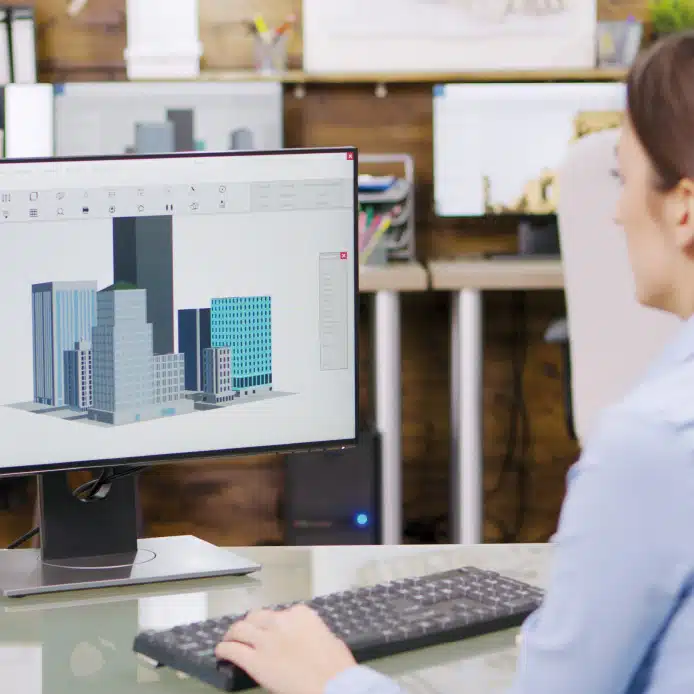
➔ Curso Modelador BIM, especialista Revit – BIM Specialist
Curso de modelador BIM y especialista en Revit, formación avanzada en BIM para profesionales de la construcción. ¡Plazas limitadas! ¡No te quedes fuera!
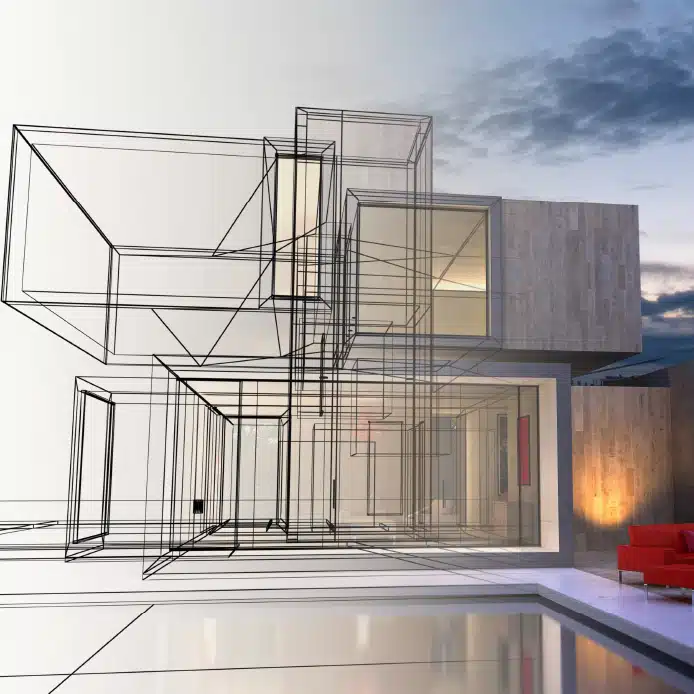
➔ Curso Online Revit Architecture: Essentials v. 2024
Curso online de Revit Architecture Essentials v. 2024, introducción al software Revit para arquitectura.
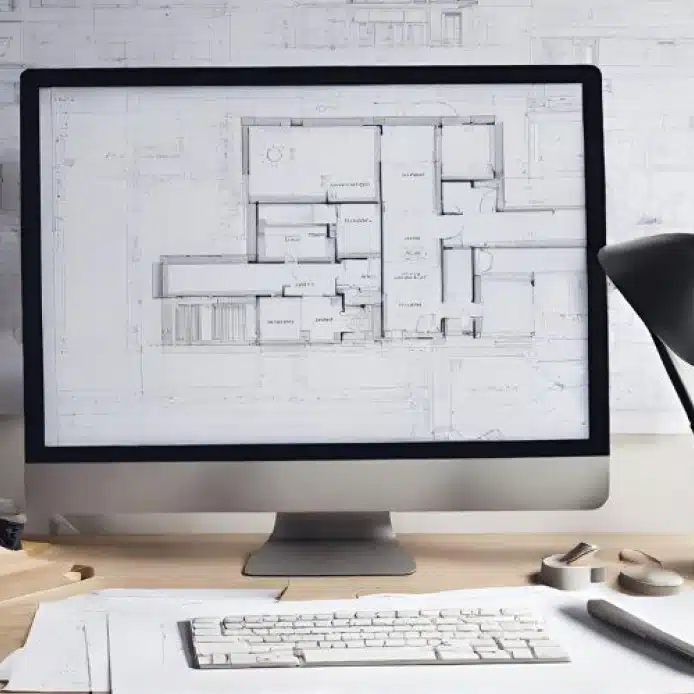
➔ Curso AutoCAD Plant 3D: Modelamiento v. 24
Curso de AutoCAD Plant 3D versión 24, modelamiento avanzado para proyectos de plantas industriales.
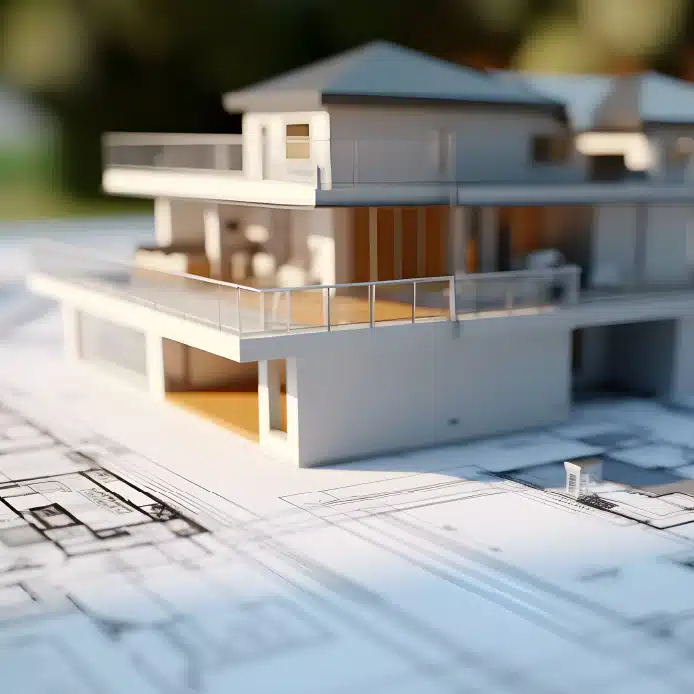
➔ Diseño y Cálculo de Estructuras con CYPE
Curso de diseño y cálculo de estructuras con CYPE, formación en software de ingeniería estructural.
Muy importante! Si tienes dudas o no tienes claro cuál es el curso o máster que más se adapta a tu perfil profesional, escríbeme un e-mail a info@jmhdezhdez.com y estaré encantado de orientarte.

➔ Curso Modelador BIM, especialista Revit – BIM Specialist
Curso de modelador BIM y especialista en Revit, formación avanzada en BIM para profesionales de la construcción. ¡Plazas limitadas! ¡No te quedes fuera!

➔ Curso Online Revit Architecture: Essentials v. 2024
Curso online de Revit Architecture Essentials v. 2024, introducción al software Revit para arquitectura.

➔ Curso AutoCAD Plant 3D: Modelamiento v. 24
Curso de AutoCAD Plant 3D versión 24, modelamiento avanzado para proyectos de plantas industriales.

➔ Diseño y Cálculo de Estructuras con CYPE
Curso de diseño y cálculo de estructuras con CYPE, formación en software de ingeniería estructural.
Muy importante! Si tienes dudas o no tienes claro cuál es el curso o máster que más se adapta a tu perfil profesional, escríbeme un e-mail a info@jmhdezhdez.com y estaré encantado de orientarte.
DESTACADOS EN ARQUITECTURACARRERAS.COM

Estilos Arquitectónicos Modernos: Un Viaje a Través de la Creatividad y la Innovación

ARQUITECTURA CARRERA: Descubre todas las Opciones de la Carrera en Arquitectura y Grados en España

Comparativa de las Mejores Universidades de Arquitectura del Mundo: Internacional, Europa, LATAM

Los Mejores Libros de Arquitectura para Arquitectos

Libros para Estudiar Arquitectura

Libros para Arquitectos Principiantes: Guías y Recursos Esenciales para Comenzar tu Carrera

Los Mejores Libros de Arquitectura para Estudiantes durante la Carrera

Era Digital de la Construcción: Innovaciones Tecnológicas en Arquitectura y Edificación
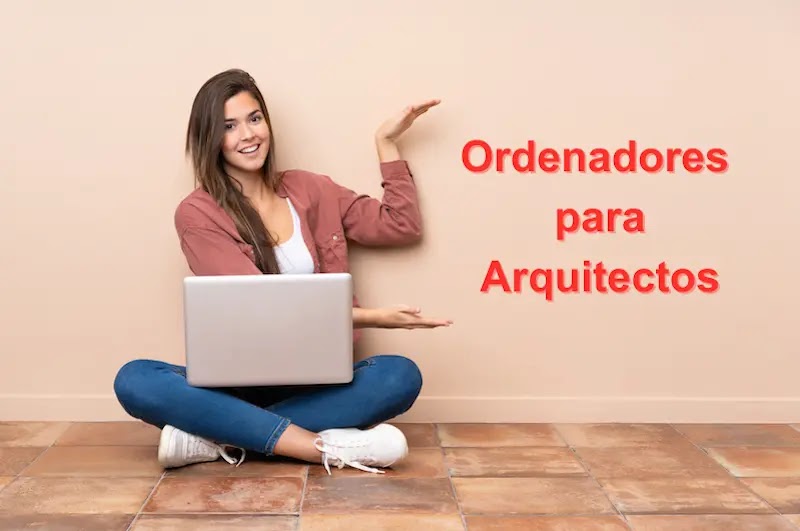
Comparativa de Los Mejores Ordenadores para Arquitectos en 2024

Las Mejores Laptops para Arquitectura en 2024

Los Mejores Ordenadores de Arquitectura para Estudiantes

Significado de: Términos Clave sobre Arquitectura, Ingeniería y Construcción

Arquitectos: Descubre el Mejor Directorio de Arquitectos que podrás encontrar en Internet (Sólo en AC)
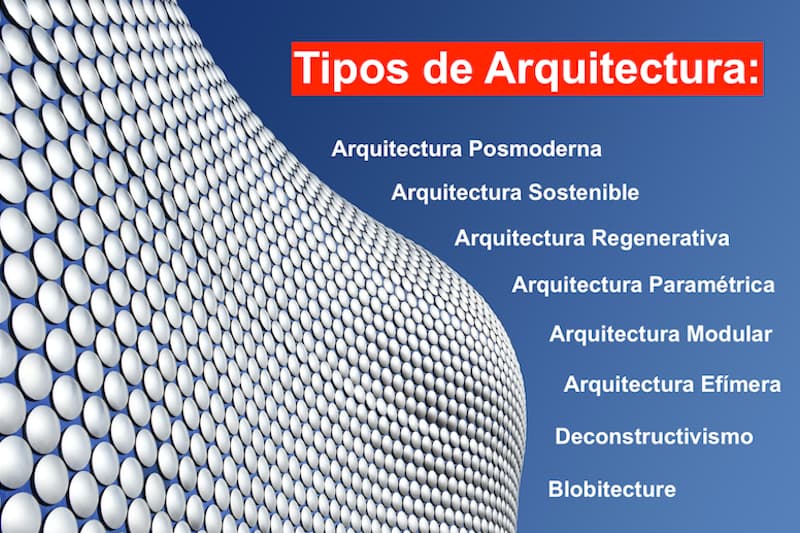
Tipos de Arquitectura: Explorando Más Allá de los Diseños Convencionales

FRASES DE ARQUITECTOS

Roles Arquitectura y Construcción (Profesiones Arquitectura)

Certificaciones para Arquitectos: Avanzando en la Excelencia Profesional

Roles BIM más Demandados en la Industria de la Construcción y el Sector AECO

Software BIM para Proyectos de Arquitectura y Construcción

Tecnología BIM: Beneficios y Ventajas en el sector AECO: Arquitectura, Ingeniería, Construcción y Operaciones

Modelo BIM

Modelo MEP

BIM 3D 4D 5D 6D 7D
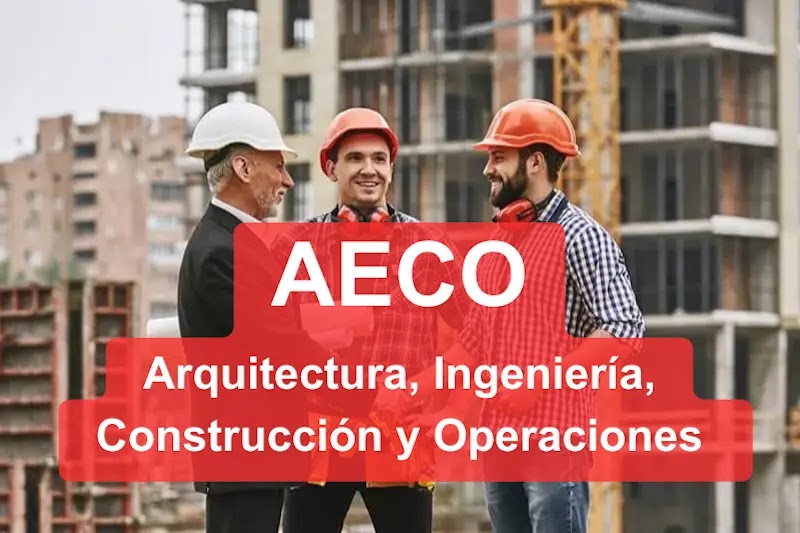
AECO: Sector Arquitectura, Ingeniería, Construcción y Operaciones

Avances Tecnológicos en la Industria de la Construcción
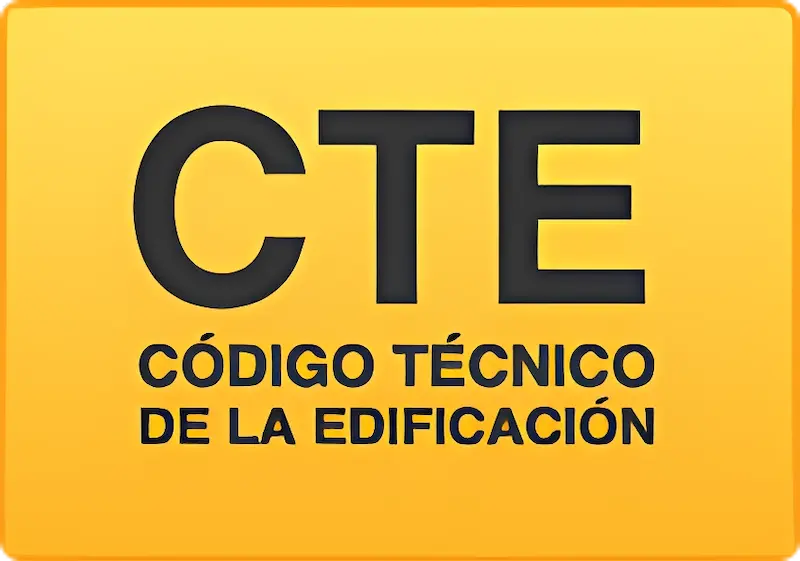
Normas Técnicas de Edificación
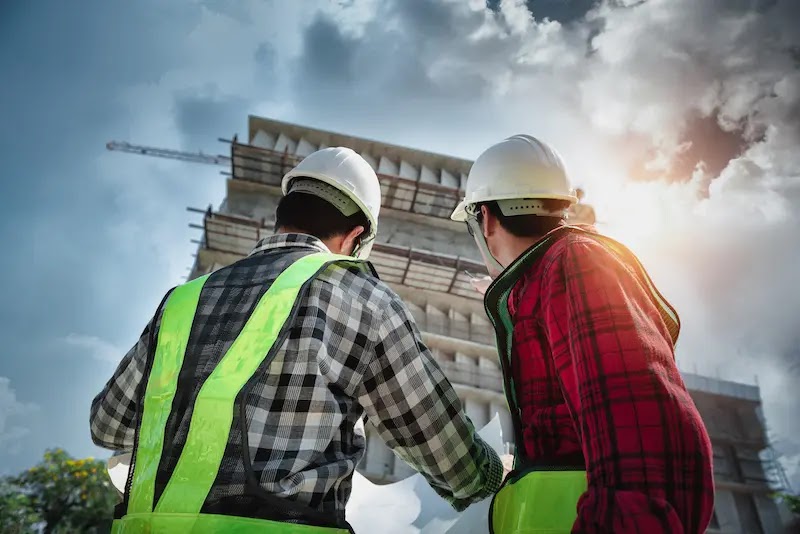
!Explora el Mejor Directorio de Construcción! 🚧 🏗️ 👷♂️ (Sólo en ArquitecturaCarreras.com)
Categorías destacadas en el blog!!
▷ LA REVOLUCIÓN DEL BIM.. CURSOS BIM RECOMENDADOS!! RENDERS' FACTORY AECO..
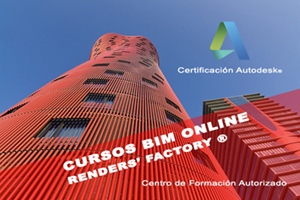
CURSOS BIM ONLINE

▷ Formación BIM
▷ Master en BIM Online
▷ Máster BIM Internacional Oficial Autodesk
▷ Master BIM Manager Online
▷ BIM Expert
▷ BIM Specialist
▷ Curso Revit Arquitectura
▷ Curso familias Revit
▷ De Revit a 3ds Max: Renderizado con V-ray
▷ Curso Revit Estructuras
▷ Curso Revit MEP

Conoce todos los aspectos de la Metodología BIM y Revit
TODOS LOS CURSOS Y MÁSTERES BIM
→ MÁSTERS
→ BIM
→ AUTODESK
→ CYPE
→ DISEÑO MECÁNICO
▷ CURSOS ONLINE RECOMENDADOS!!

- CATEGORÍAS DE CURSOS ONLINE
▷ Formación online
▷ Cursos online
▷ Domestika Cursos
▷ Domestika cupón descuento
▷ Cursos de Arquitectura online
▷ Cursos online de Ilustración
▷ Cursos online de Diseño gráfico
▷ Cursos online de Fotografía y Vídeo
▷ Cursos online de 3D y Animación
▷ Cursos de Diseño online
▷ Cursos online de Dibujo
▷ Cursos online de Bellas Artes
▷ Cursos online de Dirección de Arte
- CURSOS ONLINE DOMESTIKA (POR SOFTWARE)
▷ AutoCAD
▷ SketchUp
▷ 3ds Max
▷ Adobe Photoshop
▷ Adobe Illustrator
▷ Adobe After Effects
▷ Adobe Lightroom
▷ Cinema 4D
▷ Adobe Indesign
LOS MEJORES CURSOS ONLINE PARA CREATIVOS | CURSOS DOMESTIKA
- ÚLTIMAS RESEÑAS CURSOS DOMESTIKA
 ▷ Curso Revit Online, por Majo Mora
▷ Curso Revit Online, por Majo Mora
 ▷ Curso de AutoCAD Online, por Isabel Martínez Abascal
▷ Curso de AutoCAD Online, por Isabel Martínez Abascal
 ▷ Curso SketchUp online, por Alejandro Soriano
▷ Curso SketchUp online, por Alejandro Soriano
 ▷ Curso Infoarquitectura 3D, por Amo Visual 3D
▷ Curso Infoarquitectura 3D, por Amo Visual 3D
 ▷ Curso de Lumion, por Salva Moret
▷ Curso de Lumion, por Salva Moret
MARAVILLAS DEL MUNDO
- CRISTO REDENTOR, BRASIL
- CHICHEN ITZÁ, MEXICO
- COLISEO DE ROMA, ITALIA
- CIUDAD DE PETRA, JORDANIA
- PIRÁMIDES DE GIZA, EGIPTO
- ÓPERA DE SÍDNEY, AUSTRALIA
- EIFFEL TOWER, FRANCIA
- STATUE OF LIBERTY, EE.UU.
- MOÁIS DE LA ISLA DE PASCUA, CHILE
- ACRÓPOLIS DE ATENAS, GRECIA
- TORRE DE PISA, ITALIA
- GOLDEN GATE BRIDGE, EE.UU.
- EMPIRE STATE BUILDING, EE.UU.
- BIG BEN, INGLATERRA
- TORRES PETRONAS, MALASIA
- PUENTE DE CARLOS IV, REPÚBLICA CHECA
- MONTE RUSHMORE, ESTADOS UNIDOS
- MUSEO GUGGENHEIM BILBAO, ESPAÑA
- HOTEL BURJ AL ARAB, UAE
- CAPILLA SIXTINA, ITALIA
- CN TOWER DE TORONTO, CANADÁ
Edificios altos destacados en USA
- ONE WORLD TRADE CENTER, NEW YORK
- 8 SPRUCE STREET, NEW YORK
- AQUA TOWER, CHICAGO
- TRUMP CHICAGO TOWER, CHICAGO
- BANK OF AMERICA TOWER, NEW YORK
- THE CHICAGO SPIRE, (OBRA PARALIZADA)
- THE NEW YORK TIMES TOWER, NEW YORK
- HEARST TOWER, NEW YORK
- ESPIRITO SANTO PLAZA, MIAMI
- MIAMI TOWER, MIAMI
- FOUNTAIN PLACE, DALLAS
- CITICORP CENTER, NEW YORK
- PENNZOIL PLACE, HOUSTON
- SEARS TOWER, CHICAGO
- OLD WORLD TRADE CENTER, NEW YORK
- TRANSAMERICA PYRAMID, SAN FRANCISCO
- JOHN HANCOCK CENTER, CHICAGO
- LAKE POINT TOWER, CHICAGO
- MARINA CITY, CHICAGO
- SEAGRAM BUILDING, NEW YORK
- MILE HIGH TOWER | THE ILLINOIS, (VISIÓN)
- AMERICAN INTERNATIONAL, NEW YORK
- EMPIRE STATE BUILDING, NEW YORK
- 570 LEXINGTON AVENUE, NEW YORK
- CHRYSLER BUILDING, NEW YORK
- WOOLWORTH BUILDING, NEW YORK
- FLATIRON BUILDING, NEW YORK
- HOME INSURANCE BUILDING, CHICAGO
Entradas especiales
MONUMENTOS DESTACADOS EN EL MUNDO
- HSB TURNING TORSO
- CN TOWER, CANADÁ
- ARCO DE ST. LOUIS, MISSOURI
- SPACE NEEDLE, SEATTLE
- TORRES DE CIUDAD SATÉLITE, MÉXICO
- MEMORIAL MONTE RUSHMORE, DAKOTA DEL SUR
- COLUMNA SIN FIN, RUMANÍA
- GOLDEN GATE BRIDGE, SAN FRANCISCO
- EMPIRE STATE BUILDING, NUEVA YORK
- CHRYSLER BUILDING, NUEVA YORK
- CRISTO REDENTOR, RIO DE JANEIRO
- LA PEDRERA, BARCELONA
- EL PENSADOR DE RODIN, PARÍS
- EDIFICIO FLATIRON, NUEVA YORK
- TOWER BRIDGE (PUENTE TORRE), LONDRES
- TORRE EIFFEL, PARÍS
- ESTATUA DE LA LIBERTAD, NUEVA YORK
- HOME INSURANCE BUILDING, CHICAGO
- BROOKLYN BRIDGE, NUEVA YORK
- WASHINGTON MONUMENT, WASHINGTON D.C.
- STATUE OF FREEDOM CAPITOLIO, WA DC
- BIG BEN, LONDRES
- PUERTA DE BRANDENBURGO, BERLÍN
- FONTANA DI TREVI, ROMA
- FUENTE DE LOS CUATRO RÍOS, ROMA
- ÉXTASIS DE SANTA TERESA, ROMA
- FUENTE DEL TRITÓN, ROMA
- PUENTE DE RIALTO, VENECIA
- TUMBA DE MICHELANGELO, FLORENCIA
- CAPILLA SIXTINA, ROMA
- DAVID DE MIGUEL ÁNGEL, FLORENCIA
- PUENTE DE CARLOS, PRAGA
- PONTE VECCHIO, FLORENCIA
- TORRE DE PISA, LA TOSCANA
- MOÁIS DE LA ISLA DE PASCUA, CHILE
- CHICHEN ITZÁ, YUCATÁN
- LAOCOONTE Y SUS HIJOS, ROMA
- COLISEO DE ROMA, ITALIA
- VICTORIA DE SAMOTRACIA, MUSEO DEL LOUVRE
- VENUS DE MILO
- CARIÁTIDES DE ATENAS
- ACRÓPOLIS DE ATENAS, GRECIA
- PETRA, JORNANIA
- EL ESCRIBA SENTADO DEL LOUVRE
- PIRAMIDES DE GIZA, EGIPTO
¿Sabías qué...? muy interesantes! Curiosidades: Arquitectura, Escultura, Pintura y Arte
PUENTES VANGUARDISTAS DESTACADOS
- Infinity Bridge, Stockton
- Juscelino Kubitschek Bridge, Brasilia
- Millenium Bridge, London
- Golden Gate Bridge, San Francisco
- Brooklyn Bridge, New York City
- Megyeri Bridge, Budapest
- Millau Viaduct, Aveyron
- Harilaos Trikoupis Bridge, Athens
- Seri Wawasan Bridge, Putrajaya
- Reiman Bridge, Milwaukee
- UFO Bridge, Bratislava
- Puente del Alamillo, Sevilla
- Sundial Bridge, Redding
- Reggio Emilia Bridges, Bolonia
- Puente del Tercer Milenio, Zaragoza
- Campo Volantin Footbridge, Bilbao
- Puente de la Barqueta, Sevilla
- Humber River Bridge, Toronto
- Puente Bach de Roda, Barcelona
- BP Bridge, Chicago
- Pasarela de la Arganzuela, Madrid
- Erasmus Bridge, Rotterdam
- Puente de la Mujer, Buenos Aires
- Gateshead Millenium Bridge, London
CUADROS FAMOSOS (PINTURA)
- El Guernica (Picasso)
- La Danza (Henri Matisse)
- El beso (Gustav Klimt)
- El grito (Edvard Munch)
- La Noche estrellada (Vincent van Gogh)
- Un baño en Asnières (Georges Seurat)
- Impresionismo (Pintores destacados)
- La Libertad guiando al pueblo (Delacroix)
- Saturno devorando a un hijo (Goya)
- La Joven de la Perla (Vermeer)
- La Venus del espejo (Diego Velázquez)
- La lechera (Vermeer de Delft)
- La ronda de noche (Rembrandt)
- Hipómenes y Atalanta (Guido Reni)
- La Vocación de San Mateo Caravaggio
- Cabeza de Medusa (Caravaggio)
- Frescos de la Capilla Sixtina (Miguel Ángel)
- Almuerzo sobre la hierba de Manet
REFERENCIAS PARA ARQUITECTOS Y ESTUDIANTES DE ARQUITECTURA Y DISEÑO
Arte Contemporáneo
- Johannes Wessmark (Hiperrealismo)
- Jaume Plensa
- Nathan Sawaya (Arte LEGO)
- Serge Marshennikov (Hiperrealismo)
- Escultura Calatrava Chicago
- Bou (Santiago Calatrava)
- Alberto Giacometti
- Frases Pablo Picasso
- El Ángel del Norte (Antony Gormley)
- El hombre que camina I (Alberto Giacometti)
- Chicago Picasso
- Torres Satélite (Luis Barragán)
- John Kacere (Fotorrealismo)
- El Guernica de Picasso
- La musa dormida (Brancusi)
- El Arte de: Damian Lechoszest
- Frescos de la Capilla Sixtina (Miguel Ángel)
- Almuerzo sobre la hierba de Manet
Mitología, Historia, Leyendas
- Lady Godiva
- Eros y Psique
- Hipómenes y Atalanta (Guido Reni)
- La Creación de Adán de Miguel Ángel
- La Piedad de Miguel Ángel
- Arquitectura Postmoderna
- Frases Gaudí
- Los Rascacielos más altos del Mundo
- Todos los ¿Sabías qué...?
- Deconstructivismo
- Burj Khalifa
- Obras destacadas en: El Museo del Louvre
- Famous phrases
- Pensador de Rodin
- Frases Oscar Niemeyer
www.jmhdezhdez.com
(Blog sobre Arquitectura y Arte)
Copyright ©
José Miguel Hernández Hernández. All rights reserved






























































